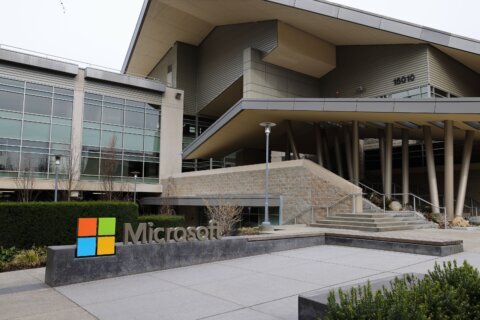By Steve Winter, special to wtop.com
WASHINGTON — According to the CES website, 85 percent of show exhibitors cite media coverage as one of their primary reason for attending the show. Some companies — the large exhibitors in particular — use publicity to solidify their brand and drive their corporate messaging, while startups and incubators seek exposure to either support crowdfunding efforts or attract interest from analysts or investors.
But one local company is relaying on media coverage from the world’s largest gathering of consumer technology innovators to aggressively drive customer demand for their product.
“We’re here at CES because we believe this is one of the best ways to impact the consumer market through the media that covers these stories,” says Barbara Barclay, president of Bethesda-based RightEye. “Although our vision tests are ultimately conducted through a doctor or an optometrist, it’s the consumer who ultimately wants it; and when we get our message into the news, consumers respond. They call us directly.”
To support this mission — and three new products the company unveiled this week — RightEye premiered its line at CES Unveiled on Monday afternoon. A private gathering for journalists two days before the start of the show, RightEye attracted considerable attention from reporters curious to learn about a relative industry newcomer who was selected by hospitals, the U.S. Military, various law enforcement agencies and even the Pittsburgh Pirates to provide eye tracking technology.
During the show, the company exhibited at the CES Digital Health Summit, a marketplace in the Sands Expo Center devoted exclusively to health and wellness innovation.
“RightEye is a health technology company that uses eye tracking to revolutionize vision performance and patient care,” Barclay says. “By deploying a science-based, metric-driven methodology, RightEye helps patients improve how they see, feel and perform. In just two minutes, RightEye’s patented technology measures visual skills and provides critical insights into a patient’s health. RightEye also creates eye-tracking-based vision therapy solutions to help the end user achieve optimal Vision Performance.”
The tests are as simple a matter as sitting in front of a gaming computer and following activities on a screen. The eye tracker is attached to the bottom of a large gaming screen reads eye movements. RightEye’s cloud-based software then interprets the interactions and generates a report that the system emails instantly to the patient or doctor.
The key, however, says Barclay, is the patient’s adoption of the recommended therapeutic process, typically driven by the health care provider — or in the case of military and law enforcement or a sports team, by senior officers, coaches and trainers.
“Each of these new products are designed to help health care providers assess concussions, eye sight, and medical and performance issues in patients and then use those metrics to develop programs designed to improve how their patients see, feel and perform,” Barclay says. “The RightEye Neuro Vision is a 15-second concussion test that helps health care providers more clearly understand the severity of a patient’s head trauma and better assess their recovery over time. What RightEye Essential Vision provides is a comprehensive category of core vision tests that will one day replace standard vision screenings used around the world, while RightEye Performance Vision offers a set of vision tests to help athletes by assessing vision strengths and identifying areas of vision that can be improved to enable them to reach maximum performance levels.”
While doctors, optometrists, hospitals, neurologists, neuro-ophthalmologists and specialty organizations including sports teams are the company’s optimal target audience, Barclay and her team clearly recognize that demand will result from more of a “pull” as opposed to a “push” marketing strategy; which clearly substantiates RightEye’s commitment to direct targeting of the consumer.
“Quite naturally, we have a great deal of success with events such as the American Academy of Optometry Show which we attended back in October; yet we really seem to generate much more traction by targeting the end-consumer. For that reason, we will continue to take advantage of the direct marketing and promotional power of shows like CES,” Barclay said.
Pricing ranges from a low of $495 to $2,000 per month. All technology is free but the fees cover the licensing of results and reports.
Editor’s Note: Longtime CES attendees Steve Winter and Kenny Fried are contributing reports from the show. In their day jobs, they are public relations professionals with Sage Communications. During CES they are not reporting on any of their clients’ products or those of direct competitors.
Video by Kenny Fried







